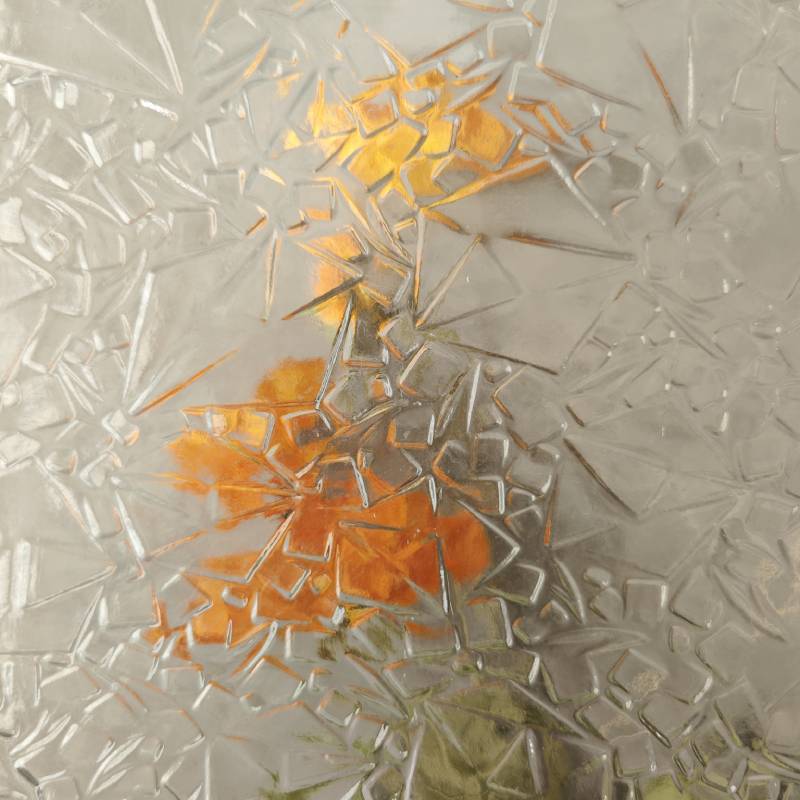In today's rapidly evolving architectural landscape, the quest for innovative materials that marry aesthetics with practicality has never been more intense. Among the frontrunners of this material revolution is low iron frosted glass—a product that not only satisfies contemporary aesthetic desires but also addresses a spectrum of practical needs, making it a top choice in various industries.

Low iron frosted glass has surged in popularity due to its unique ability to offer enhanced clarity and purity compared to traditional glass. Unlike regular clear glass, low iron options contain reduced iron content, which minimizes the greenish tint inherent in standard glass products. This results in a truer color rendition, making it particularly favored in environments where color accuracy and vibrancy are paramount, such as in art galleries or modern architectural facades.
The frosting of the glass further elevates its functionality and design appeal by providing a means to balance privacy with natural light. This attribute is particularly advantageous in workplace designs and residential settings where open space is desired without sacrificing seclusion. The frosted finish softens the light transmission, producing a diffused effect that reduces glare while creating a serene interior atmosphere.

Beyond aesthetic value, the functional advantages of low iron frosted glass are substantial. Its enhanced durability and ability to be toughened or laminated make it a reliable candidate for sustainable building practices. Such glass not only contributes to the longevity of a structure but also plays a key role in thermal regulation, which can lead to significant savings in energy consumption. The glass acts as an effective insulator, maintaining interior temperatures and reducing reliance on heating and cooling systems.
From an expert standpoint, the versatility of low iron frosted glass cannot be overstated. It is suitable for a myriad of applications, including but not limited to, office partitions, shower enclosures, balustrades, and even as a decorative element in furniture. Each application showcases its ability to transform ordinary spaces into extraordinary ones, providing dynamism and aesthetic elegance without compromising on function.
low iron frosted glass
The rise in its usage can also be attributed to its contribution to building safety standards. The glass can be manufactured to be impact-resistant, offering an excellent alternative to traditional safety glass options. This property is particularly crucial in environments that require high safety measures without relinquishing design sophistication, such as schools and hospitals.
Moreover, the manufacturing processes of low iron frosted glass have adapted to today's ecological concerns, with many suppliers committed to sustainable production methods. The reduced iron content does not only amplify purity but often indicates a dedication to low-emission and environmentally friendly glass production practices. This commitment to sustainability enhances its appeal in an era where eco-friendly solutions are not just preferred but imperative.
When assessing the trustworthiness of low iron frosted glass, its widespread adoption in notable architectural projects stands as a testament to its reliability and quality. Architects and designers globally endorse it for its capability to push the boundaries of design while adhering to regulatory standards and client expectations.
Finally, one of the paramount advantages of low iron frosted glass lies in its capacity to foster creativity. Designers and architects are consistently presented with the challenge of merging form with function. Low iron frosted glass serves as a canvas upon which innovative ideas are realized, enabling the creation of spaces that don’t just serve their intended purpose but resonate with emotional and aesthetic depth.
In conclusion, the prowess of low iron frosted glass as a product of both art and science is unmistakable. Its role in modern architecture and interior design underscores a blend of experience, expertise, authoritative design capability, and an unwavering commitment to trustworthiness. As the demand for sustainable and aesthetically pleasing materials continues to rise, low iron frosted glass stands ready to meet the challenges of tomorrow's architectural ambitions.



